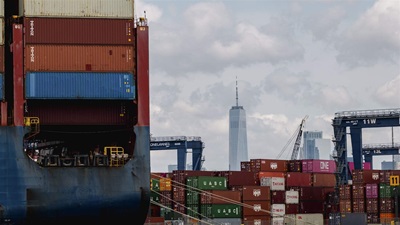But planning for fiscal threats beyond the immediate budget cycle is not only far more complex, it’s often overlooked altogether.
The Pew Charitable Trusts is working with policymakers to reimagine their approach to fiscal management, reaching beyond the budget conditions of today to plan for the risks and investment needs of tomorrow. Although many budget challenges are shared, specific needs and priorities vary from state to state. There is no single path to strengthening state fiscal management practices.
Sudden shocks such as recessions and natural disasters can severely strain state finances in the short term, especially for states dealing with chronic deficits from costs outpacing revenue. Compounding these immediate and ongoing threats are emerging trends—population shifts, technological advancements, aging infrastructure, a changing climate—that can lead to future fiscal crises. The absence of critical, long-term preparation could mean the difference between a resilient state budget and an upended one.
Although these risks loom over every state, their true cost can be obscured by one-time infusions to the budget or a lack of information about long-term liabilities, or superseded by more pressing needs. Accounting for and acknowledging these budget stressors can, however, help states avoid painful measures during tough economic times, such as raising taxes when constituents are cash-strapped, cutting key programs people rely on in a downturn, and compromising long-term obligations.
Over the past decade, states have made important progress in strengthening their long-term fiscal health. Some have embraced risk-management tactics, like regularly studying revenue volatility, stress-testing their budgets against future scenarios, and evaluating the risks and rewards of tax incentives. Meanwhile, other states have collectively amassed their largest fiscal reserves on record and have improved their retirement systems to their best condition in more than a decade, according to Pew estimates.
These improvements have established a clear picture of what is possible as states consider the health of their finances over the next decade. Pew can help states build on that success, which is supported by Pew’s track record of providing policymakers across the political spectrum with a rigorous understanding of states’ fiscal health, elevating research-driven best practices, and partnering with state officials to help fortify their state’s future. Pew aims to enable a new approach to state fiscal management, delivering to decision-makers the data, analysis, and guidance they need to face these long-term risks head-on and identify opportunities for growth.

For state government budgets to stay on a sustainable path, policymakers must maintain a long-term perspective, informed by high-quality data and analysis. In a 2023 report, “Tools for Sustainable State Budgeting,” The Pew Charitable Trusts identified and defined two analytical tools—long-term budget assessments and budget stress tests—that can help policymakers ensure that today’s revenue and spending decisions do not cause budget problems in the future.

When the federal government imposes tariffs on imports, the effects often ripple far beyond cargo ships and customs offices. Tariffs have the potential to significantly influence state budgets by increasing uncertainty in economic forecasts, raising the costs of public projects, and disrupting revenue streams.

Fiscal stress in the U.S.’ largest cities is widespread. In a five-month span from December 2024 to April 2025, Chicago, Los Angeles, San Francisco, and Washington all experienced credit rating downgrades.

Roads and bridges in the United States are a vital part of daily life, connecting people to jobs, schools, homes, and services and supporting nearly $19 trillion in freight each year. In fiscal year 2024, the latest year for which data was available, states spent about $247 billion—roughly 8% of their total expenditures that year—on these roadway assets.

Effective management of state pension investments is crucial to ensuring the sustainability of retirement benefits for millions of public sector employees, so The Pew Charitable Trusts has tracked state pension investment practices and outcomes since 2012. This chartbook is the latest installment of that work and offers a detailed analysis of recent investment trends, focusing on asset allocation, investment performance, and management fees for 73 major public pension plans in fiscal years 2021 and 2022.








